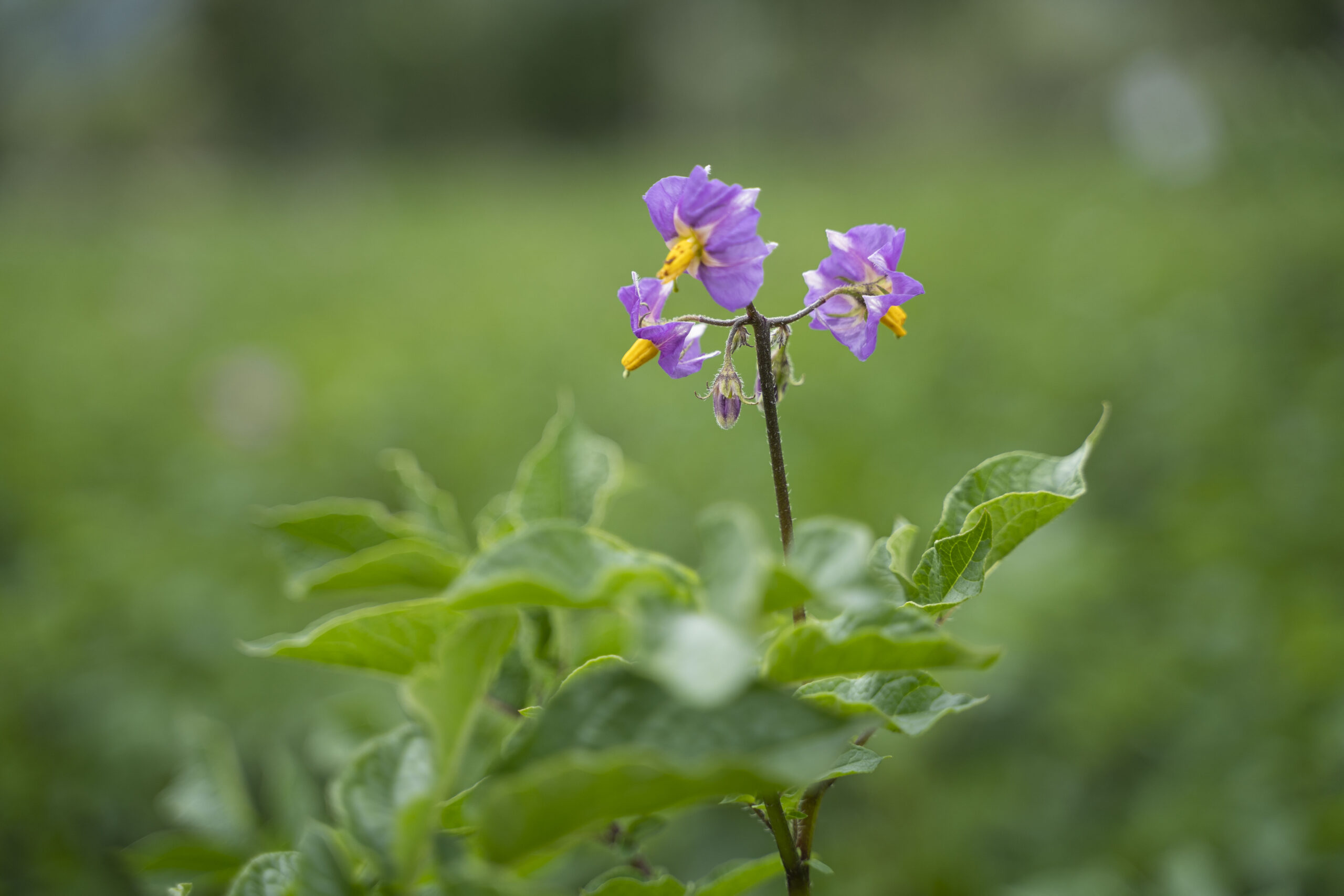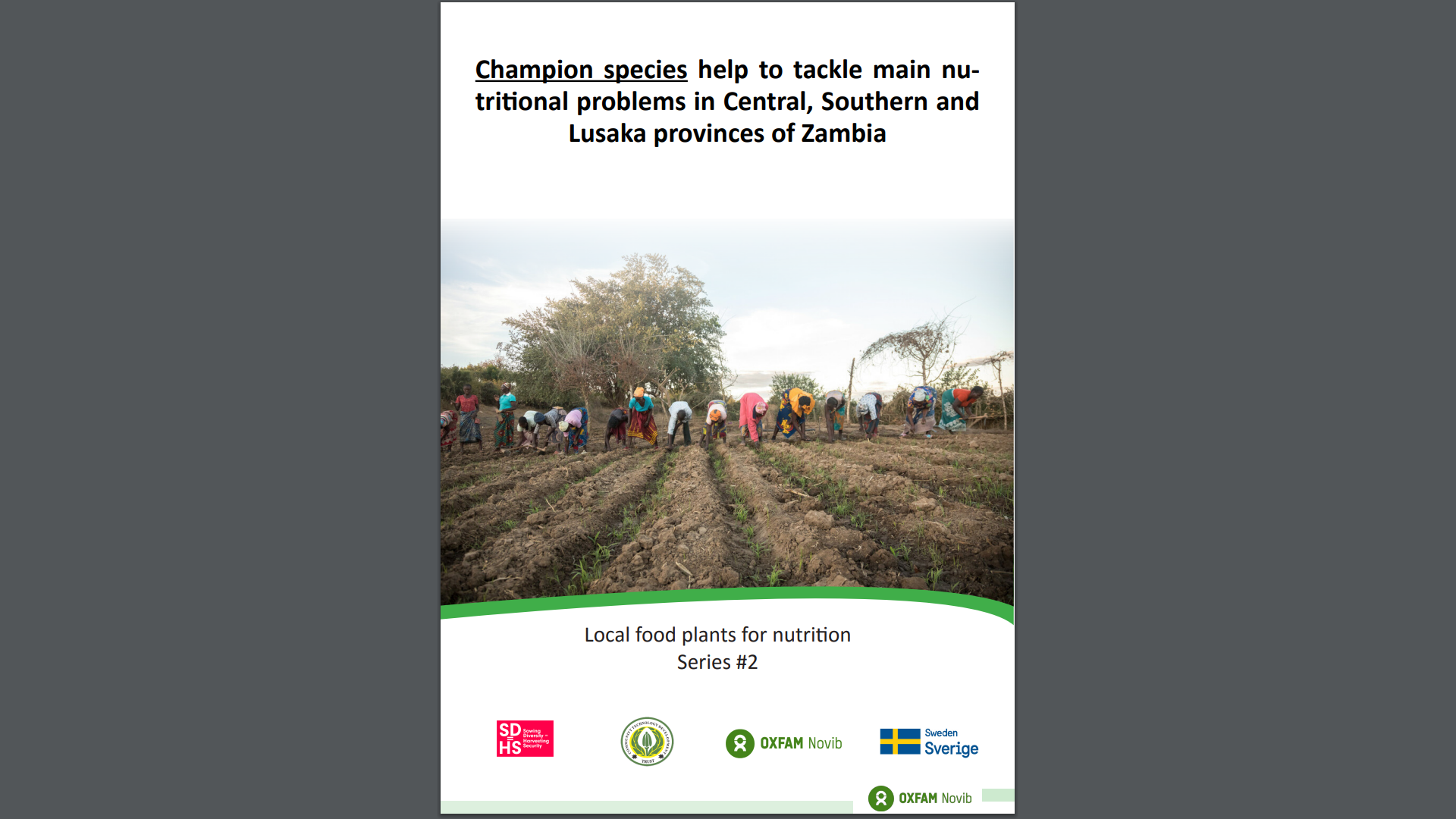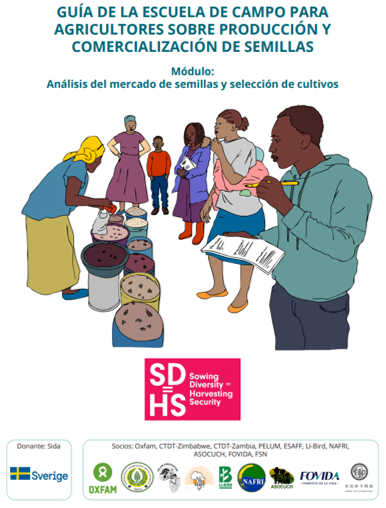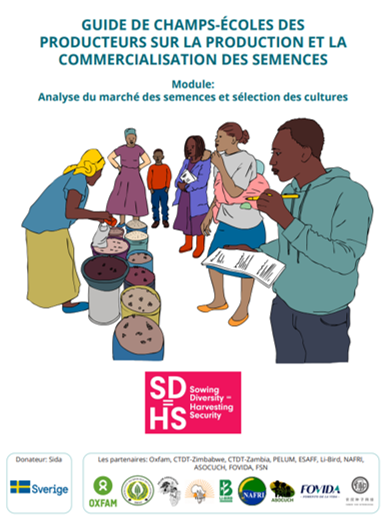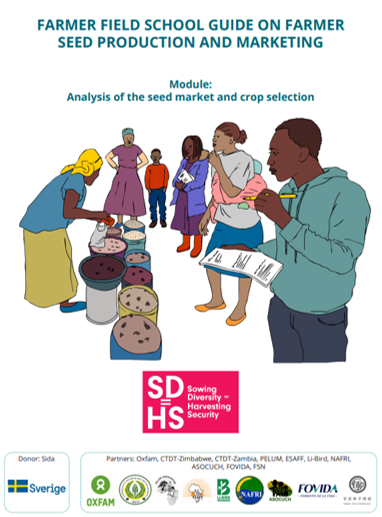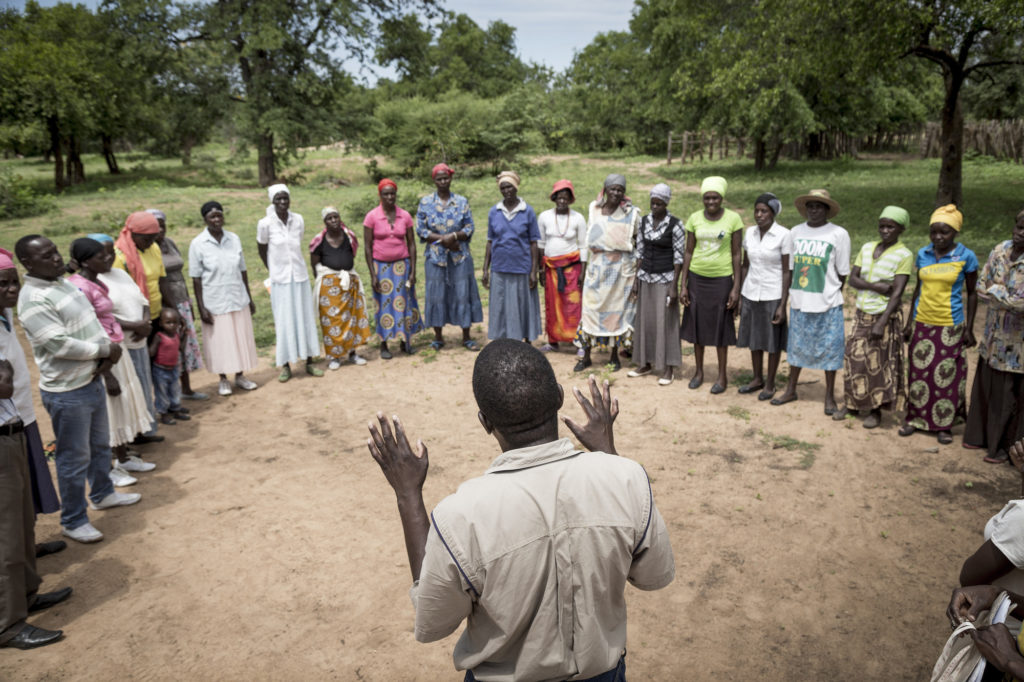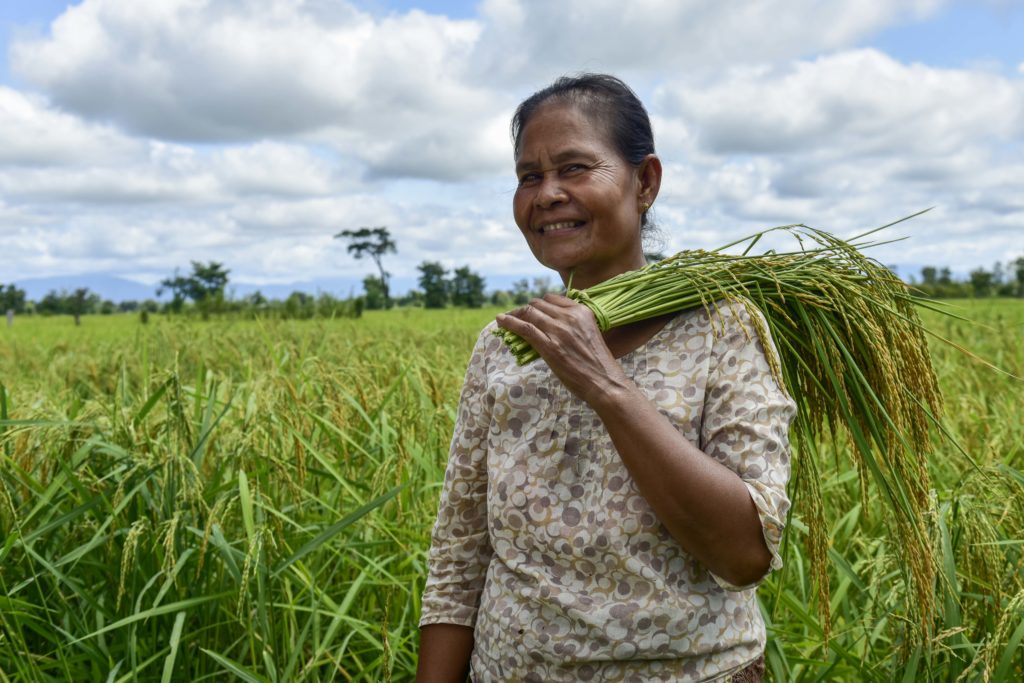Local Food Plants for Nutrition
Series #2
This document shares the plant species findings of the baseline survey conducted between 2019-2021, during the second phase of the Sowing Diversity = Harvesting Security (SD=HS) programme (2019-2023). The results of the baseline survey are complemented by the main findings of the diagnostic exercises conducted by SD=HS’ Farmer Field Schools (FFS). Both activities are part of SD=HS’ work on Local Food Plants for Nutrition.
SD=HS is a global program, and our work on local food plants is currently implemented by Oxfam Country Offices and implementing partners in seven countries. These partners are the National Agricultural and Forestry Research Institute (NAFRI) and the Agricultural Research Center (ARC) in Laos, the Local Initiatives for Biodiversity, Research and Development (Li-Bird) in Nepal, the Asociación de Organizaciones de los Cuchumatanes (ASOCUCH) in Guatemala, the Participatory Ecological Land Use Management (PELUM) and the Eastern and Southern Africa Small Scale Farmers’ Forum (ESAFF) in Uganda, the Zambia Alliance for Agroecology and Biodiversity (ZAAB) in Zambia, the Community Technology Development Trust (CDTT) in Zambia and Zimbabwe, and the Fomento de la Vida (FOVIDA) in Peru. SD=HS is coordinated by Oxfam Novib.
The analysis of the baseline and FFS diagnosis conducted by farmers aimed at establishing the local and regional nutritional and agroecological context in the communities in which the Farmer Field Schools (FFS) on Nutrition and Local Food Plants were implemented. The baseline served to advise and guide the development of a country-specific FFS curriculum and the implementation of FFS activities, by informing FFS participants, collaborators, and other stakeholders, about the potential role of local food plants in improving local diets and reducing the food scarcity period.
This Briefing Note is part of a series of briefing notes summarizing the program’s findings. An additional publication includes the “Improving diets and reducing food scarcity with the help of local food plants in Central, Southern, and Lusaka Provinces of Zambia” which focuses on the seasonal variations in the diet and local food plant consumption. ‘Champion species help to tackle main nutritional problems in Central, Southern, and Lusaka Provinces of Zambia’ presents the results of the plant species analysis and provides a recommendation of key nutritious species to be promoted locally. In the next exercise, the comparison of the baseline survey and FFS diagnosis results across the seven program countries will be consolidated in global SD=HS publications.
We are grateful for the funding support from the Swedish International Development Cooperation Agency (Sida). We hope this document contributes to increased attention on the role of local food plants for healthy and affordable diets, and the nutrition security of indigenous peoples and smallholder farmers.

